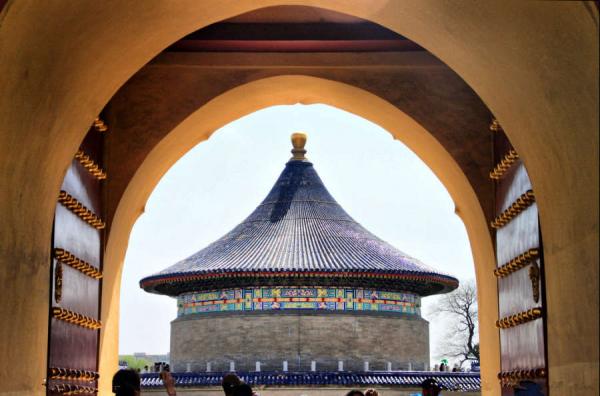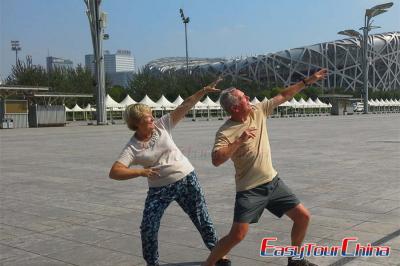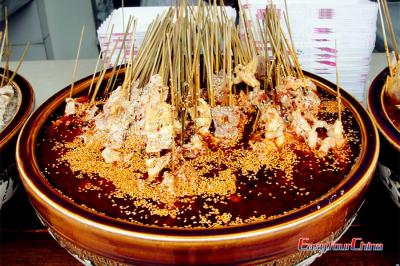The Bund (Wai Tan Shanghai)
The Bund or Wai Tan (which means the Embankment) refers to Shanghai's famous waterfront running along the west shore of the 114-kilometer Huangpu River (a tributary of Yangtze River), forming the eastern boundary of old downtown Shanghai. It is one of the most famous tourist attractions in China, and a must-visit sight if you are traveling in Shanghai.
In 1844, this area was zoned out as the British concession, making up the lively portrayal of Shanghai ten miles of concessions. Just across the wide avenue (Zhongshan Dong Yi Lu) that parallels the promenade is Shanghai's signature cityscape, a long wall of colonial-era European buildings erected by foreign governments, trading houses, and expatriate millionaires, mostly been built during the prosperous and notorious 1920s and 1930s.
Today it consists of a marvelous promenade, stretching from Suzhou Creek in the north to Jinling Lu in the south, the perfect platform for strolling along the busy river. These architectures, along the Bund are unanimously regarded as a "World Architecture Fair".
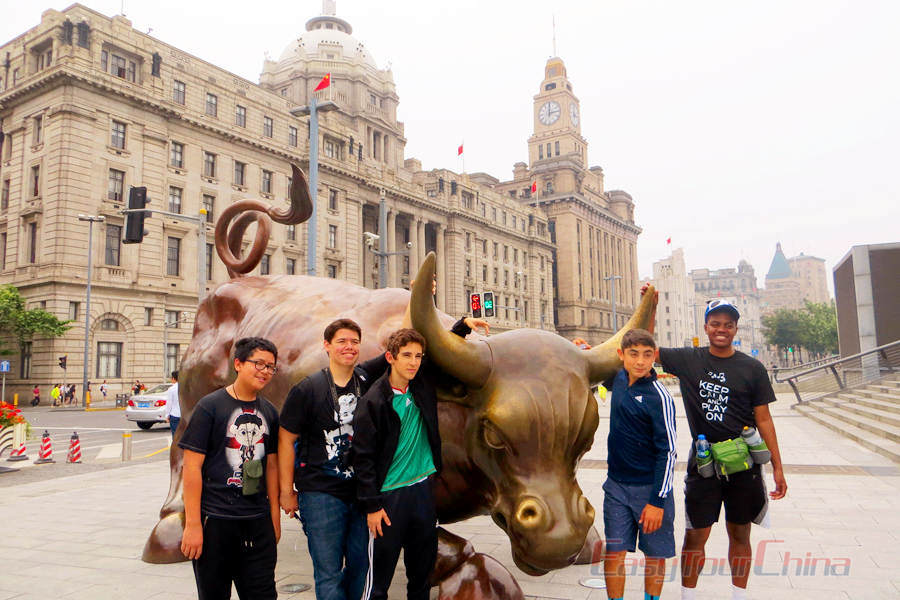
On the other side of the river, casting the shadow of Shanghai's future over its colonial past, are the modern towers of the city's remarkable economic boom: the skyscrapers of the Pudong New Area that include some of Asia's and the world's tallest structures, the high-tech pagodas of the 21st century.
Across the Waibaidu Bridge, it’s the Shanghai Broadway Mansions. On the 22nd Floor of the Mansions, you will find yourself above the tree line, and unfurling below you, a marvelous view of the bustling city of Shanghai with a sea of buildings in all their majesty. Opposite the Bund, that is Pudong Lujiazui district (Pudong new area), which stands symbolic modern buildings of Shanghai, such as the Oriental Pearl TV Tower, Jin Mao Tower, Shanghai Tower, Shanghai World Financial Center, and so forth. The Shanghai skyline represents the development of China's reform and opening up policy and giving a epitome of Shanghai's modernization drive.
Shanghai The Bund Facts
What is the Bund in Shanghai China
The Bund was the center of the old Shanghai concession during the colonial era and the starting point of modern urban development in Shanghai.
More than a hundred years ago, it was located within the territory of the British concession. At that time, foreigners called Shanghai Wai Tan the "Bund", a word derived from Hindi, meaning "the riverbank of the eastern waters". It was learned by the British from India in the 17th century and later brought to China. The "Wai" in "Wai Tan" should be the "Foreign countries".
In the Ming Dynasty, the common people called the Bund "Huangpu Beach". By 1860, Emperor Xianfeng of Qing Dynasty referred to foreigners as "Wai Guo Ren", and since then, the word " Wai (foreign)" has been widely used in society. At the end of the 19th century, in an advertisement by the Dent & Co, "Wai Tan (The Bund)" was used instead of "Huangpu Beach".
Today, the Bund is one of the iconic landmarks in Shanghai, with countless tourists home and broad visiting it every day to experience its profound historical heritage and unique charm.
>> Recommended 3-day Shanghai Highlights Tour with the Bund
Brief History of the Bund
In the old days, the Shanghai Bund was a barren shoal with only a narrow dirt road along the mudflats for boatmen to walk along while pulling fiber. The western side of the mudflats was farmland.
The Bund in 1843 had a large number of private wharves. The British later disowned all the private wharves and built a reinforced concrete Joonpo Line, which fixed the shoreline of the Bund from then on. The Bund was first the exclusive territory of the British, who built the British Consulate. Today, it houses the Shanghai branch of the China Travel Service. Later the Americans entered and the Bund became a public concession.
In the nearly 100 years between 1854 and 1941, Shanghai gradually emerged as a financial center. It attracted many foreign and Chinese banks to set up here, giving Shanghai the reputation of “Wall Street of the East”.
In 1882, the Great Northern Telegraph Company set up its first telephone exchange at No. 7 on the Bund. And in 1910, the Pudong Tang Works and Goodwill Bureau opened a ferry service between Tongren Pier on the Bund and Donggou to facilitate transportation, which was named the first No. 1 ferry.
By 1949, there were more than 600 foreign banks and 4,000 foreign business organizations on the Bund. It was not only the largest international trade and financial center in China, but also the third largest financial market in the world. Among them, the Lihe Bank, which entered the Bund in 1847, was the first foreign bank to enter Shanghai. Dent & Co. was the first company to obtain the first deed of lease after the opening of Shanghai to build on the Bund.
Another highlight of the Bund is the Bund Park. On summer evenings, a small band from the Bureau of Public Works performed here.

The Historic Architectures on the Bund
The French, Americans and Germans all used the same word for the Bund architecture: palaces. Banks and foreign banks were the main protagonists of the Bund complex. A German recorded in his report the banks and foreign banks on the Bund in 1886. The banks were: HSBC, Profit, France, McAuley, New Leroy, etc. The foreign companies were: Jardine Matheson, Swire, Zenchen, Meiji-Shi, Tianxiang, etc.
Walking on the Bund, you will see:
>> Recommended Private Shanghai One Day Tour with the Bund
The Bund 8
The Bund 8 is a commercial office complex operated by Derby Group, located at 8 Zhongshan Dong Er Road, Huangpu District, Shanghai.
Formerly the site of the French Post Building, it is one of the few French-style office buildings among the existing historical buildings on the Bund. The top of the building is decorated with a dome mural with the theme of French nursery rhymes. The interior is colored in blue ink and dark gold. The floor is inlaid with the Pearl of the Orient motif and the walls are decorated with silhouette reliefs of the Ten Mile Ocean Farm.
Now there are cultural facilities such as art dome murals and an immersive book bar.
>> Recommended 4-day Shanghai Discovery Tour with Zhujiajiao
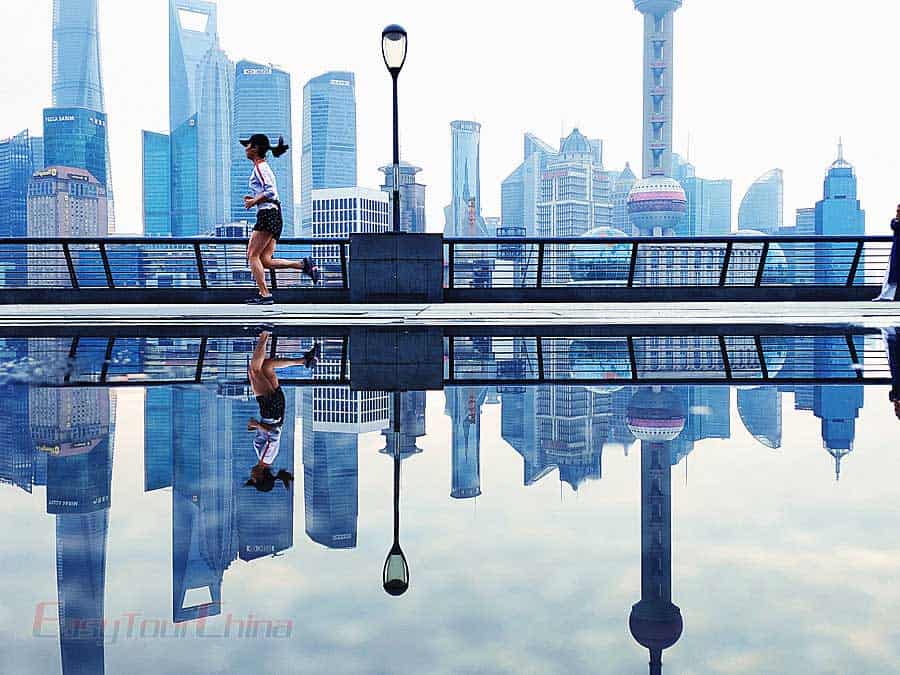
Top Attractions on the Bund That You Shouldn’t Miss
Waibaidu Bridge
It is China's first all-steel riveted bridge and the only remaining unequal-height truss bridge. As the starting point of the Bund, the century-old Waibaidu Bridge has witnessed Shanghai's rise from nothing to prosperity. At night, the bridge is illuminated with landscape lights and is a good place to enjoy the night view of the Bund.
Peace Hotel
The North Tower of Peace Hotel is located at No. 20, Nanjing East Road, Huangpu District, Shanghai, China. It is one of the most famous hotels in China and also one of the landmark buildings in Shanghai.
Huangpu Park
It contains the Shanghai People's Heroes Memorial Tower, the Bund Historical Memorial, large reliefs and the Memorial Tower Square. The park is full of green trees, birds and flowers, and is also a good place for people to relax and exercise. You can experience the life of the locals.
Asia Building
The Asia Building was built in 1916 and was also known as the "First Building on the Bund". The building has an eclectic appearance. The bottom and top sections of the building are in Baroque style, while the middle section is in modernist architectural style.
The Bund Sightseeing Tunnel
China's first cross-river pedestrian tunnel, connecting the Bund and Little Lujiazui, employs modern high-tech means to display a variety of motifs, sights and background music inside the tunnel. This tunnel can be used as a means of transportation or as a viewing tunnel.
>> Recommended 5-day Shanghai Family Tour
What to Do on the Bund Shanghai?
1. Explore different styles of antique architectures and designs and sculptures. Beyond commerce and business, the most impressive things are the architecture and the streetscape. The street architectures of the bund section are particular about individuality and aesthetic appreciation, constituting the effect of collage scenes. Not only Neoclassical wall and Baroque gable wall are colorful and outstanding, but also buildings in British, Italian, French, Spanish styles and so on. These decorative and artistic forms are examples of architecture with distinct personalities. It makes the Bund a must-photo place when you visit Shanghai.
2. Take Huangpu River cruise to view the night scene of the Bund and Shanghai. Huangpu River cruise is one of the top cruise trails in China. The night view along Huangpu River is stunning with pretty light show and exquisite buildings. Steeping yourself on the cruise will be a nice relaxing time.
3. Experience the Huangpu River tunnel for sightseeing in the bund. This tunnel crosses Huangpu River, connecting the Bund and the Oriental Pearl TV Tower. The 647-meter-long sightseeing tunnel is a magical world of colorful dreams created by high-tech means. You can feel marvelous about it when you take a visit in an eco-friendly carriage.
4. Wander along Huangpu River and catch distinctive sense of both sides. A leisure trip is wandering around the Bund on walking paths slowly in the afternoon. You seem to be standing at the crossroads of history, on your right hand, it’s historical memory; on your left hand, it’s modern development.
5. Enjoy exquisite dishes and dims in deluxe hotels or MICHELIN restaurants in Shanghai. There are many famed hotels and restaurants located around the Bund, trying various tastes of them.
6. Learn about Shanghai’s colonial memory in Huangpu Park. It is the earliest European-style garden in Shanghai, built in 1886. Inside, the Bund historical museum displays many stories of wars and China’s revolutions.
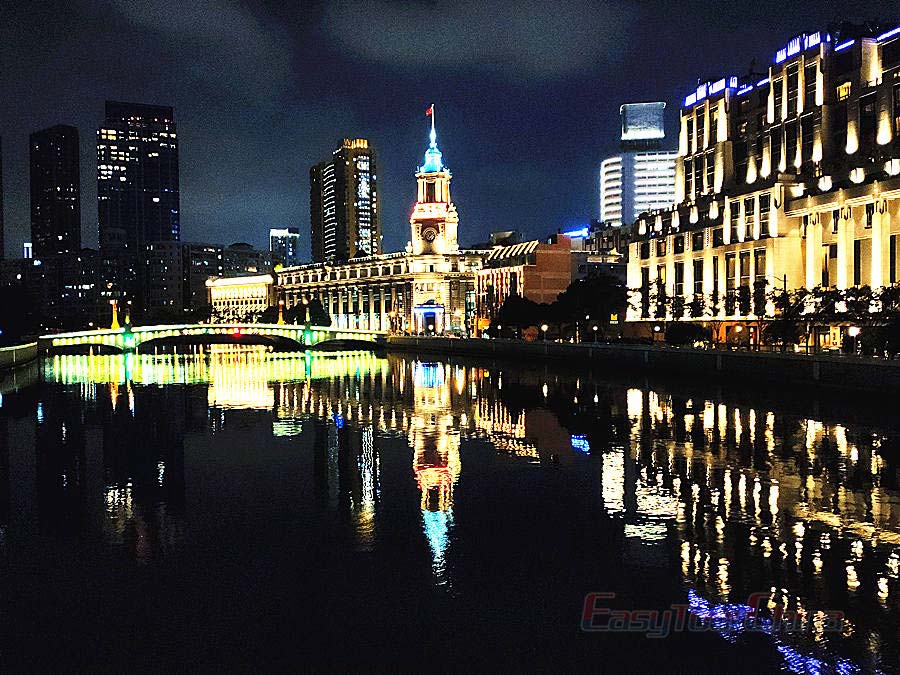
How to Get There?
Metro Line 2 or Line 10 will take you to East Nanjing Road Station, and then walking about 15 minutes you can see the Bund.
Visiting the Bund by sightseeing bus is also a nice choice. Both Red Line and Blue Line bus can bring you to the right place conveniently. You can also take Bus 20, 26, 33, 37, 42, 55, 65, 123, 135, 145, 147, getting off at around and walking a few minutes to get to the Bund.
We don’t recommend to drive there because it’s hard to find a proper parking place if you’re not familiar with the place.
The Bund Shanghai Hotels
Looking for the best hotels on the Bund? There are countless hotels on the Bund, most of which are luxurious and have a history, including the Peace Hotel, Waldorf Astoria, shanghai, Hyatt, regent, Sunrise on the Bund, and many more.
Plan Your Shanghai Trip with the Bund with ETC
Experience custom Shanghia tours such as a walking tour from the Yu Garden, Shanghai City God Temple, Nanjing Road, to the Bund with private guides. Learn about the Shanghai history and take in the stunning views of Shanghai skyline. Set sail on the Huangpu River and witness Shanghai’s iconic buildings —all curated by your 1-on-1 China travel expert.
See our top recommended itineraries:
